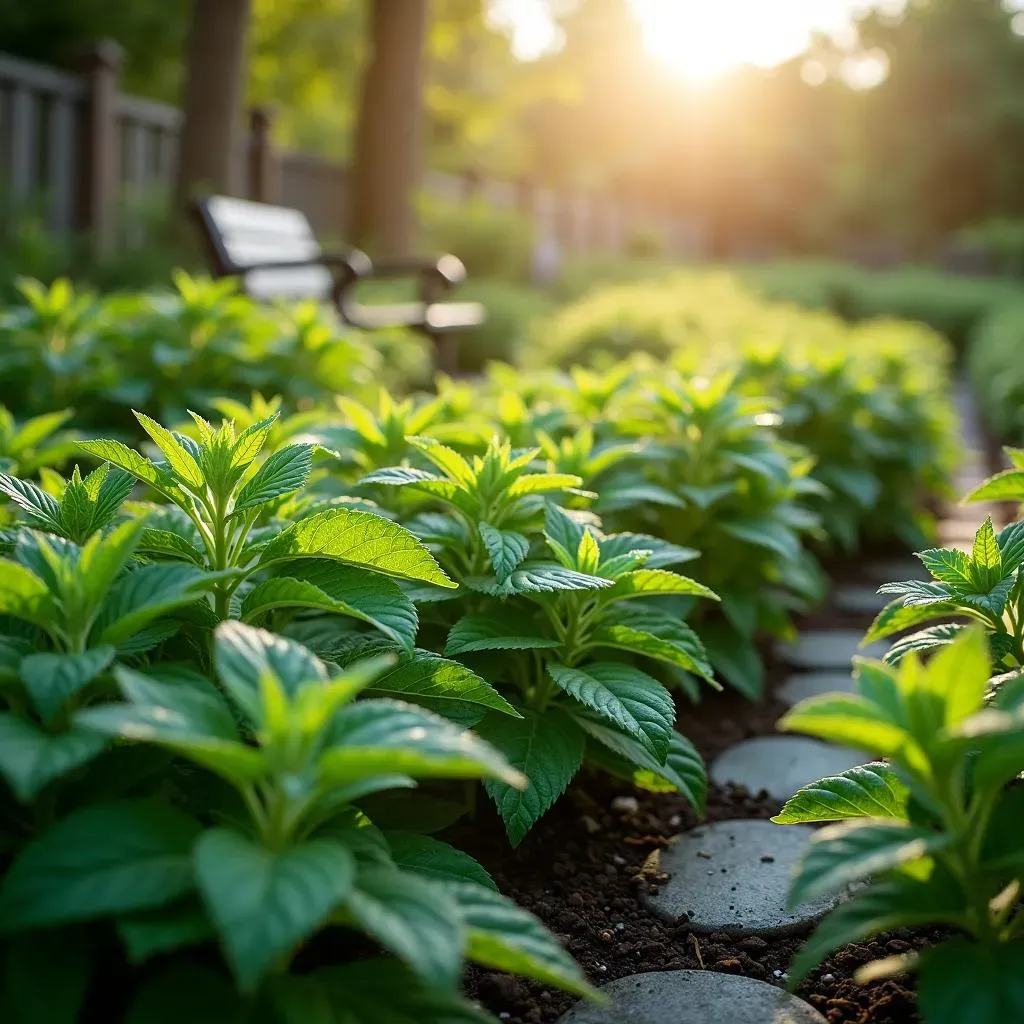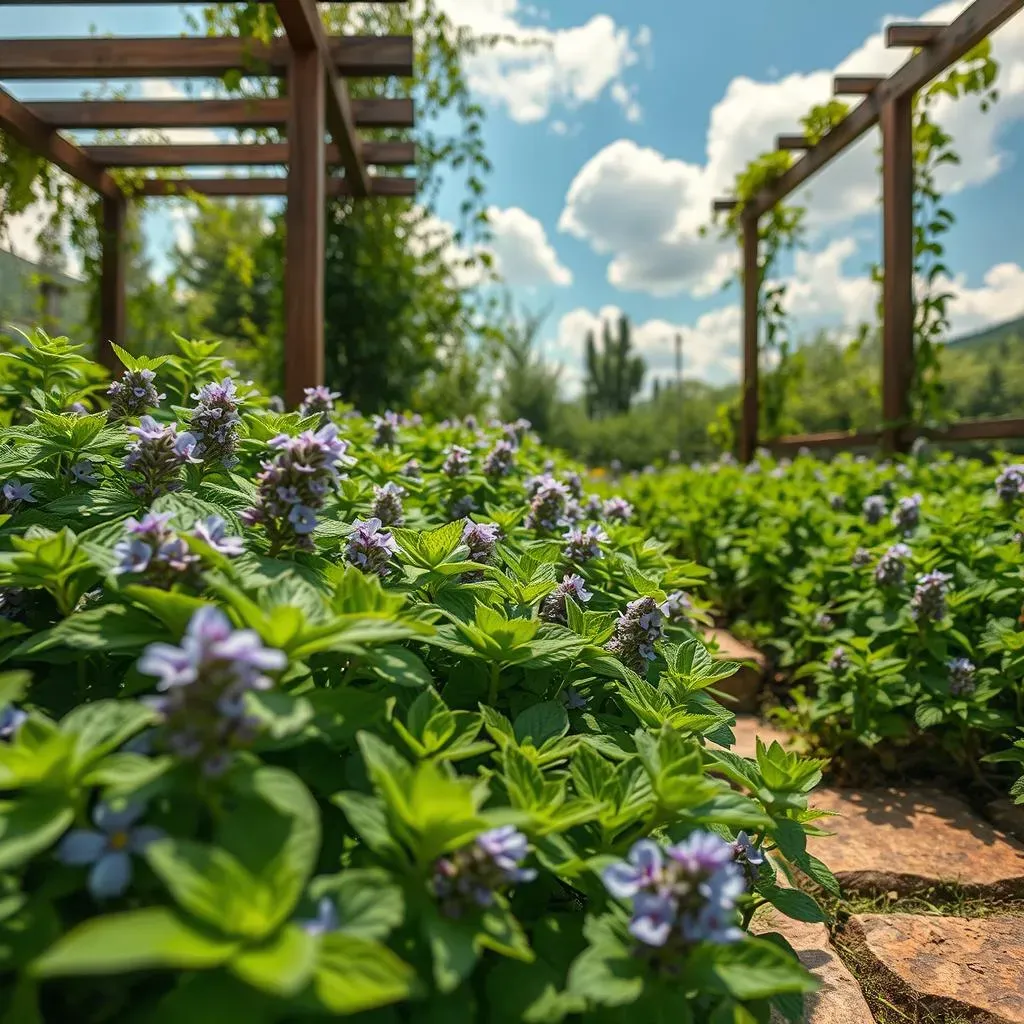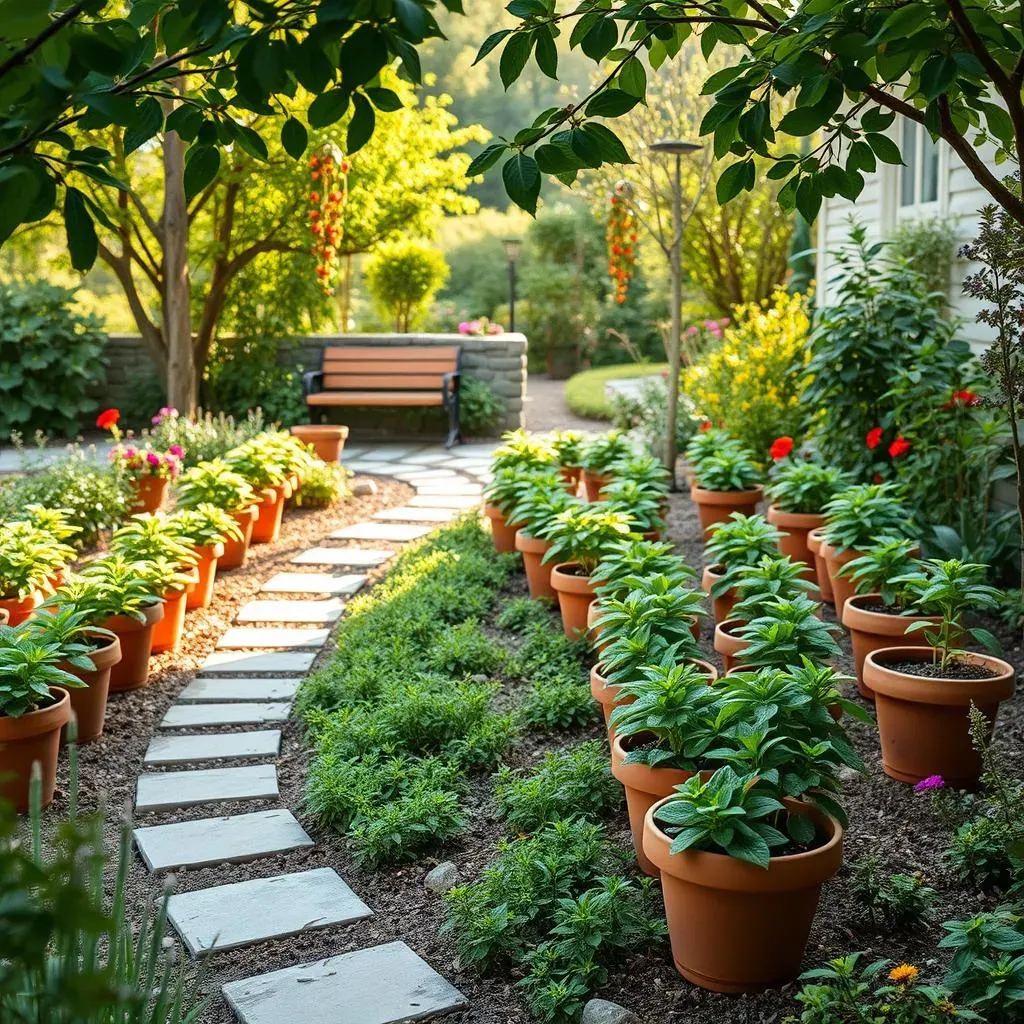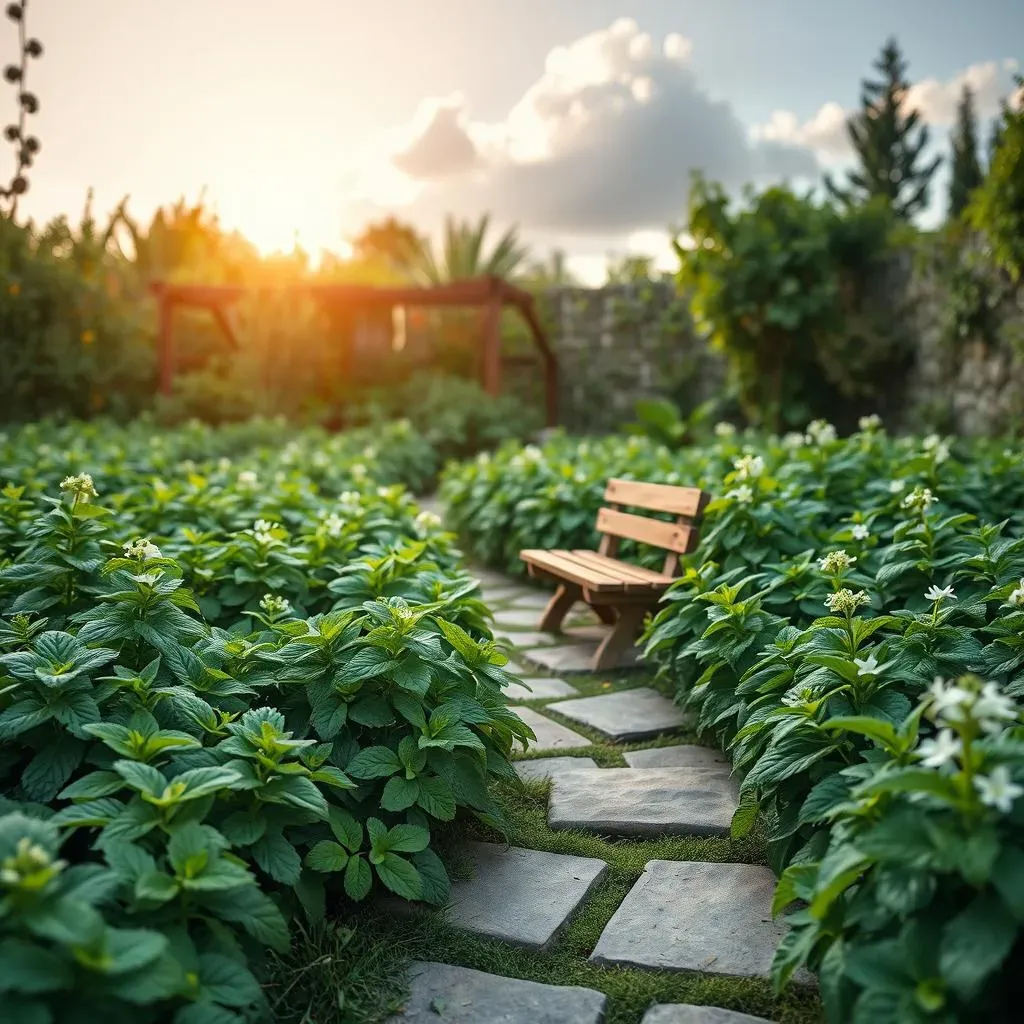Table of Contents
Dreaming of a garden brimming with the refreshing scent of spearmint, ready to provide you with an endless supply of leaves for your favorite tea? Then you've come to the right place! This article is your complete guide to designing and cultivating the perfect spearmint tea plant garden layout. We'll walk you through every step, from choosing the ideal location and preparing the soil to planting, maintaining, and even enhancing the aesthetic appeal of your spearmint patch. Forget generic gardening advice; we're diving deep into the specifics of creating a thriving spearmint tea garden tailored to your needs and desires. Whether you're a seasoned gardener or a complete beginner, this comprehensive guide will empower you to create a beautiful and productive spearmint tea plant garden layout. Get ready to transform your outdoor space into a fragrant and functional haven, brimming with the aromatic delight of homegrown spearmint. Prepare to learn about site selection, soil preparation, planting techniques, ongoing care, pest management, and even creative design elements to make your spearmint garden a true showstopper. Let's embark on this journey together and create the spearmint tea garden of your dreams!
Planning Your Spearmint Tea Plant Garden Layout: Site Selection and Soil Preparation
Planning Your Spearmint Tea Plant Garden Layout: Site Selection and Soil Preparation
Choosing the Perfect Spot for Your Spearmint
First things first: location, location, location! Spearmint loves sunshine but can tolerate a bit of shade, especially in scorching climates. Aim for at least four hours of direct sunlight daily. A spot that gets morning sun and afternoon shade is ideal. Too much direct sun can scorch the leaves, while too much shade can lead to leggy, weak growth and a less intense flavor in your tea. Think about the overall layout of your garden too – do you want the spearmint to be a focal point or tucked away in a quieter corner?
Consider airflow as well. Good air circulation helps prevent fungal diseases, which can be a real nuisance with any herb garden. Avoid planting your spearmint in low-lying areas where air doesn't move freely. A gentle breeze is your friend!
Sunlight | Soil Drainage | Air Circulation |
|---|---|---|
4-6 hours of direct sunlight | Well-draining soil to prevent root rot | Good airflow to prevent fungal diseases |
Preparing the Soil for Abundant Growth
Spearmint isn't fussy, but happy plants make the best tea! Start with well-draining soil. Clay soil can be improved by adding compost or other organic matter to increase drainage and aeration. This also boosts the soil's nutrient content, giving your spearmint the best possible start. You can amend heavy clay soil with things like perlite or sand to improve the texture and drainage. But remember, it's a balance – you don't want sandy soil that dries out too quickly.
Before planting, test your soil's pH. Spearmint prefers a slightly acidic to neutral pH (around 6.0 to 7.5). You can easily get a soil testing kit from most garden centers. If your soil's pH is off, you can adjust it with lime (to raise the pH) or sulfur (to lower it). Follow the instructions on the product carefully!
- Test your soil's pH.
- Amend the soil with compost or other organic matter.
- Adjust pH as needed using lime or sulfur.
Considering Space and Expansion
Spearmint is a vigorous grower, and if you let it, it'll spread like wildfire! This is great if you have lots of space, but if you're working with a smaller garden, you'll want to contain it. One excellent way is to plant it in a container sunk into the ground. This limits its roots and prevents it from taking over other parts of your garden. Another option is to plant it in a raised bed with a physical barrier, such as edging or landscaping fabric, to prevent its roots from spreading.
Consider the long-term layout, factoring in the spearmint’s growth habit. Will you need to regularly prune it back? Will you need to divide and replant sections periodically? Planning for expansion or containment from the outset will save you headaches down the line.
Cultivating a Thriving Spearmint Tea Garden: Planting, Growing, and Maintenance
Cultivating a Thriving Spearmint Tea Garden: Planting, Growing, and Maintenance
Planting Your Spearmint: Getting Started Right
Now that your site is prepped, let’s get planting! You can start spearmint from seeds, but it’s much easier to use cuttings or divisions. If starting from cuttings, take 4-6 inch stem cuttings in spring or early summer. Remove the lower leaves and dip the cut end in rooting hormone (optional but helpful). Plant them in moist, well-draining soil, keeping them consistently moist until they root. For divisions, carefully dig up an established spearmint plant and separate the roots into smaller clumps, each with its own set of stems and roots. Replant these divisions, spacing them appropriately.
Planting depth is key. Plant your spearmint at the same depth it was growing previously. Too deep, and it might rot; too shallow, and it might struggle to establish itself. Water thoroughly after planting to settle the soil around the roots. Mulching around the base of the plants helps retain moisture and suppress weeds – a win-win!
Planting Method | Timing | Tips |
|---|---|---|
Cuttings | Spring/Early Summer | Use rooting hormone, keep consistently moist |
Divisions | Spring/Fall | Space appropriately, water thoroughly |
Ongoing Care: Nurturing Your Spearmint
Once your spearmint is established, regular watering is essential, especially during dry spells. Aim for consistently moist soil, but avoid overwatering, which can lead to root rot. Feel the soil – if it’s dry an inch or two below the surface, it’s time to water. A layer of mulch will help retain moisture and reduce the frequency of watering.
Fertilizing isn't strictly necessary, but a light application of balanced fertilizer in spring can promote lush growth. Avoid over-fertilizing, as this can lead to excessive vegetative growth at the expense of flavor. Regular pruning is important to encourage bushier growth and prevent the plant from becoming leggy. Pinch back the tips of the stems regularly to promote branching. This also encourages more leaf production, which is what you're after for your tea!
- Water regularly, but avoid overwatering.
- Apply a balanced fertilizer in spring (optional).
- Prune regularly to encourage bushier growth.
Designing an Elegant Spearmint Tea Garden Layout: Aesthetics and Practical Considerations
Designing an Elegant Spearmint Tea Garden Layout: Aesthetics and Practical Considerations
Choosing a Design Style for Your Spearmint Garden
Now for the fun part: aesthetics! How do you envision your spearmint garden? A formal, structured design with neatly aligned rows? Or a more informal, wildflower-style arrangement? The possibilities are endless! Consider the overall style of your garden and how the spearmint will fit in. A cottage garden might call for a more rambling, less structured approach, whereas a contemporary garden might benefit from a more geometric layout. Think about the colors and textures that will complement your existing plants and garden features. Will you incorporate other herbs or flowers to create a visually appealing mix? The key is to create a design that you find beautiful and enjoyable.
Consider the height and spread of your spearmint plants. Will they be contained in pots, or will they spread freely? If you're using containers, choose pots that complement your garden's style. If you're letting them spread, think about using edging or other methods to define their boundaries and prevent them from overflowing into other areas of your garden. Remember, the design should be both visually appealing and practical.
Design Style | Layout | Container Options |
|---|---|---|
Formal | Neat rows or geometric patterns | Uniform terracotta pots |
Informal | Rambling, less structured arrangement | Variety of sizes and materials |
Incorporating Spearmint into Your Existing Garden Design
If you already have an established garden, think about how to seamlessly integrate your spearmint. Will it be a stand-alone feature, or will it be incorporated into an existing herb or flower bed? Consider the height and spread of the spearmint to ensure it doesn't overshadow other plants. You might choose to place it near a pathway for easy access during harvest. Or perhaps you'll use it as a border plant, creating a fragrant edge to your garden beds. Consider the colors and textures of your existing plants, choosing colors and textures that complement each other.
Remember that spearmint’s vigorous growth habit needs to be considered. Will you be using containers to keep it contained? Or will you be using edging or other physical barriers? If you choose to let it spread, make sure you have enough space for it to grow without encroaching on other plants. The goal is to create a harmonious and visually pleasing garden where the spearmint complements rather than competes with your other plants.
- Consider the overall garden style.
- Choose a location that complements existing plants.
- Plan for the spearmint’s growth habit.
